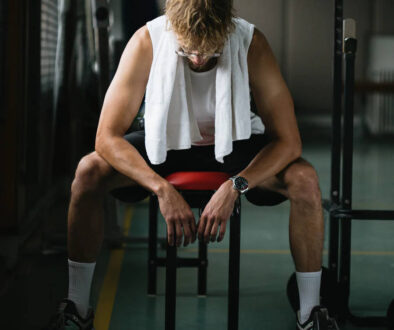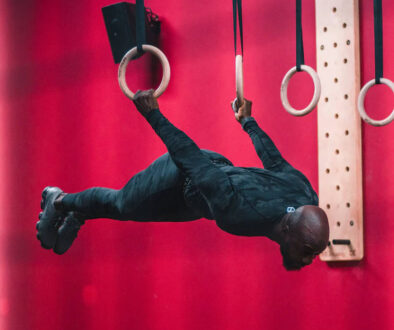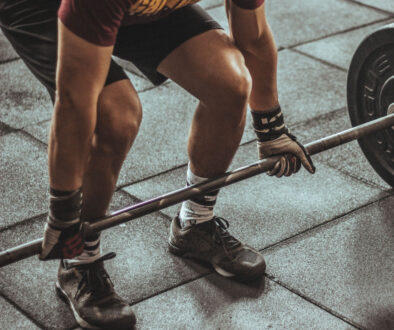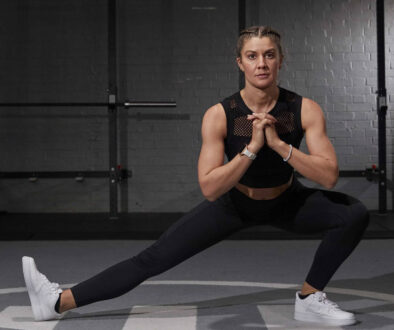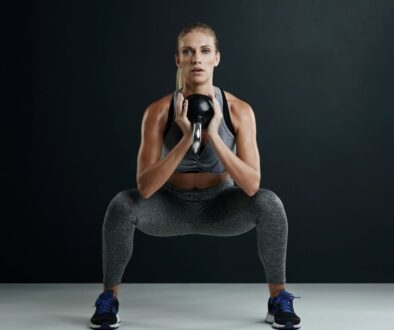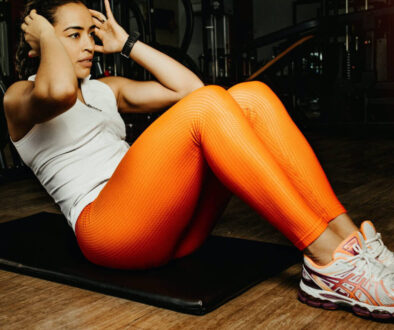Isolation vs Compound Exercises in Body Building: Benefits, Limitations & Comparison
There are two major forms of muscle building workouts: isolation and compound movements. Today, we will be exploring the difference between these two movements, plus which is more effective for hypertrophy. Without any further ado, let’s get started.
What Are Compound Exercises?
Compound lifts as shown above, are exercises that engages a lot of joints when performed. Meaning, these workouts involve more than two muscle groups being used during the exercise since more joints are actively used to lift the weight. Many compound exercises include squats, bench press, pull-ups, bent over row overhead press, and deadlifts.

What Are Isolation Exercises?
Isolation lifts are exercises that only have one primary joint being used in the exercise. As shown above, that’s an isolation exercise that focuses primarily on the biceps. Put differently, there is only one joint actively used to move the weight even though there may be other joints used to stabilize. For instance, a bicep curl only moves using the elbow joint, although the wrist is used isometrically to stabilize. And, since isolation lifts only involve one active joint, they are used to target a specific muscle at a time. That’s why we hear things in the gym like leg day, chest day, etc. So on chest day, you’ll be trained using workouts that will specifically target the pecs (chest area); the same goes for legs day, etc.

Limiting Factors On Compound Exercises
The limiting factor could be a number of different variables when using compound lifts. Therefore, it is important to select exercises that cause the targeted muscles to become the limiting factor so that they can be taken to the proximity of failure. The muscles being targeted are less likely to be the limiting factor when using compound lifts because other muscles are involved, which can also fatigue and contribute to decayed performance.
Here is what I mean. For example, the spinal erectors often fatigue and give out during a set of conventional deadlifts before the glutes and hamstrings which are being targeted. In such a case, a stiff leg deadlift may be more appropriate since the erectors are less likely to become the limiting factor, allowing more stress to be placed from the glutes and hamstrings. We can place more emphasis on the targeted muscles and less emphasis on the other muscles that could potentially get us tired by using some equipment. Let’s look at these equipment:
1. Weight Lifting Waist Belt
A belt can be used during exercises like squatting and deadlift variations as they provide more stability for the trunk. This means the trunk muscles are less likely to fatigue before the legs.
Weight Lifting Waist Belt on Amazon
2. Lifting Straps
Straps are another useful piece of equipment for any rowing, pulling or deadlifting variation by eliminating grip failure risk. Straps allow the trainee to exhaust the targeted muscles before grip strength gives out fully.
Weight Lifting Straps on Amazon
3. Wrist Wraps
Wrist wraps can be useful for pressing exercises like bench pressing or overhead pressing. The wrist straps provide more stability for the wrists making the joint more rigid. This allows more efficient force application into the barbell or dumbbell, allowing the chest, triceps, and shoulders to be fully exhausted.

Overall, without these equipment, one may get easily fatigued when performing compound exercises, even before reaching their workout goals. The equipment will help take some of the stress off the other muscles involved and reduce the chances of getting tired quickly.
Limiting Factors on Isolation Movement
There is no limiting factor for isolation lifts because a hundred percent of the tension is placed solely on one specific joint action. Put differently, isolation movements place a significant hypertrophy stimulus on the targeted muscles, which will lead to great muscle growth without the need for equipment.

Comparison Between Compound Vs. Isolated Exercises
There are three things one has to take into consideration when comparing compound against isolated exercises. These include the range of motion, accessory muscles, and volume.
1. Range of Motion
The first consideration when comparing compound versus isolation lifts is the range of motion. Generally, a greater range of motion is more effective for muscle growth. Muscles may be taken through different motion ranges with different exercises, whether they are compound or isolated.
Put differently, some compound lifts take muscles through a greater range of motion than isolation lifts and vice-versa. For example, a full range back squat takes the quads through a larger range of motion than a leg extension but, chest fly (pectoral fly) take the chest through a greater range of motion than a bench press.
So, there is no distinct advantage of using compound or isolation lifts to elevate the range of motion. It is completely dependent on the certain form of exercise, plus the muscle groups.
2. Accessory Muscles
The next consideration when comparing compound and isolation lifts is the involvement of accessory muscles. Given that compound lifts train smaller muscles indirectly, that may contribute to overall muscularity. For instance, the abdominals will be involved in exercises like squats, spinal erectors will be involved in deadlifting, movements, and the rear delts involved in rowing variation exercises.

This is advantageous as the trainee can stimulate these muscles without directly putting pressure on them. However, for isolation exercises, these smaller accessory muscles are not trained to the same extent; thus, additional exercises for these muscles need to be implemented to obtain the same level of hypertrophy from a compound movement.
3. Volume
Volume is probably the most relevant difference between these two types form of lifts. Compound lifts permits a good number of muscles to be trained simultaneously; therefore, the less total number of exercises can be implemented to train the entire body. For instance, a bench press provides a training stimulus for the chest, triceps, and shoulders all using one exercise.
Using compound lifts means that training is more efficient, which leaves time for even more volume to be performed if desired. Isolation lifts, on the other hand, only target one main muscle group at a time. This means that a lot more exercises need to be performed to accumulate the same amount of volume. As a result, this can make workouts much longer, and more specialized equipment may be required to isolate each muscle effectively.

Verdict
Taking all these factors into consideration, we can come to some possible conclusions. The first takeaway is that hypertrophy can be achieved using both forms of exercise. This is because compound and isolation lifts have their unique advantages and disadvantages, provided that smart choices are made when selecting them.
However, compound exercises seem to be a more efficient way of training given that its benefits of time, volume, and accessory muscles training, outweighs that of an isolation exercise. With that being said, you should know that using only compound lifts may limit hypertrophy gains as not all muscle fibers will fully be exhausted using just “multi-joint” movements.
Thus, to maximize muscle growth, it seems that compound lifts should be used to make up the bulk of muscle gaining program, whle isolation exercises can be used to get additional reps to muscles that may nothave been fully stretched using compound lifts. For instance, your chest, shoulders, and triceps workout should look something like this;
| Exercise | Set | Reps |
|---|---|---|
| Bench Press | 3 | 8 to 15 |
| Dumbbell Overhead Press | 3 | 8 to 15 |
| Cable Flyes | 3 | 10 to 15 |
| Cable Pushdown | 3 | 10 to 15 |
From the routine above, you can use the bench press and the dumbbell overhead press as compound lifts to accumulate the bulk of the necessary volume while working out. Then, use cable flyes and cable pushdowns as accessory isolation lift to provide additional volume for the chest and triceps while also taking them through a greater range of motion. This will help balance everything and give you that Greek god-like physique.







